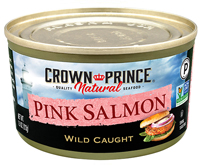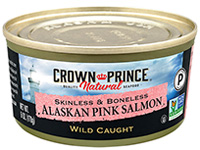Wild Caught vs. Farm Raised Salmon
Over the years, the wild caught stock of Atlantic salmon has been so reduced by over fishing that there is essentially no wild Atlantic salmon left. Instead, Atlantic salmon is now extensively farm raised: primarily in Chile, Norway, Scotland, and British Columbia. There are abundant supplies of wild Pacific salmon, especially from Alaska, due to successful management of wild harvests. While there are a few farms in British Columbia that raise Pacific salmon, the consumer can be assured that almost all Pacific salmon is wild caught.
Salmon aquaculture, also known as salmon "farming", is the industrial mass production of salmon. Farmed salmon are raised in net cages located in the ocean close off shore. Disease and parasites tend to multiply quickly in these densely populated feedlots and can spread to wild fish. In addition, fish farm waste drops to the ocean floor below the pens. Since there is no treatment of this waste, "dead zones" occur on the ocean bed. Marine life has been smothered and the waste passes contaminants into the ocean.
Millions of farmed salmon escape each year, competing with wild salmon for feed and habitat. Interbreeding between wild and farmed fish may occur and could drastically change the genetics of wild salmon populations.
Since antibiotics are fed to farmed salmon to help fight disease outbreaks, residues of these antibiotics can be passed to humans who eat farmed salmon. This increases the risk of humans developing antibiotic resistance. Early findings indicate that farmed salmon contain higher levels of PCBs and dioxins than wild salmon. These chemicals can cause cancer, high blood pressure, strokes, immune-system problems and reproductive disorders. PCBs and dioxins can also affect normal development in children.
The typical color of wild salmon comes from shellfish and certain insects that they consume. Because farmed salmon do not have this diet, their flesh is naturally gray. To make their product more marketable, some fish farm companies add chemical colorants to their fish feed. This dyes the flesh a more natural color.
Preliminary research shows that farmed salmon does not offer the same health benefits as wild salmon. The fat content of farmed salmon is higher than wild salmon and the composition of this fat is less healthy than the fat of wild salmon.
In acknowledgement as resources for the information contained above and as a reference for more information, visit these websites:
|










